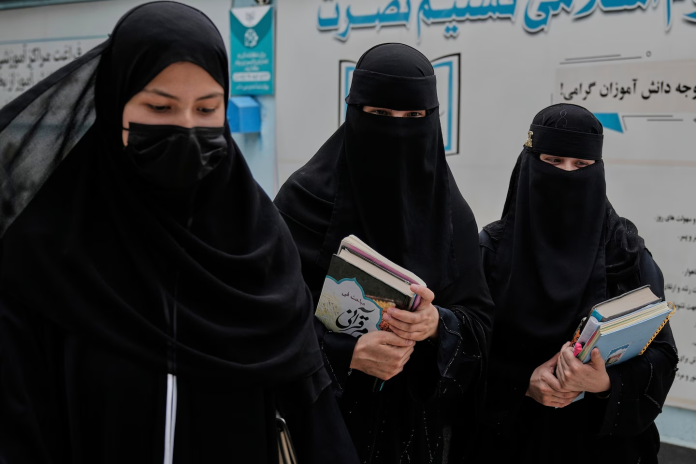A generation of Afghan girls faces the most severe educational restrictions in the world after the Taliban banned female secondary and university education three years ago, with madrasas becoming the sole sanctioned avenue for intellectual engagement, according to AP News.
Zahid-ur-Rehman Sahibi, director of the Tasnim Nasrat Islamic Sciences Educational Centre in Kabul, observes a stark transformation:
Since the schools are closed to girls, they see this as an opportunity. So, they come here to stay engaged in learning and studying religious sciences.
Ninety per cent of Tasnim Nasrat centre’s 400 students, ranging from toddlers to elderly women, are female studying Quranic recitation, Islamic jurisprudence, and Arabic in basement classrooms shielded from the summer heat.
While no official figures track female madrasa attendance, Deputy Education Minister Karamatullah Akhundzada revealed last September that Afghanistan’s religious schools collectively absorbed over one million new students in the preceding year, bringing total enrolment beyond three million.
Contested values and crushed aspirations
The atmosphere inside these institutions reflects a complex intersection of devotion and resignation. Students like 25-year-old Faiza, kneeling at plastic tables while tracing Arabic script in niqabs that leave only their eyes visible, express gratitude for religious learning yet harbour unfulfilled ambitions.
It is very good for girls and women to study at a madrasa because the Quran is the word of Allah, and we are Muslims. Therefore, it is our duty to know what is in the book that Allah has revealed to us, to understand its interpretation and translation.
Yet she confesses her thwarted desire to study medicine, one of the few professions still tentatively open to Afghan women. Her fragile hope persists that demonstrating piety might eventually persuade her family to permit professional training:
When my family sees that I am learning Quranic sciences and that I am practicing all the teachings of the Quran in my life, and they are assured of this, they will definitely allow me to continue my studies.
Even within madrasa leadership, voices question the exclusion of secular knowledge. Sahibi, while committed to Islamic pedagogy, openly critiques the narrowing of female education.
In my opinion, it is very important for a sister or a woman to learn both religious sciences and other subjects, because modern knowledge is also an important part of society. Islam also recommends that modern sciences should be learned because they are necessary, and religious sciences are important alongside them. Both should be learned simultaneously.
This sentiment resonates beyond classroom walls. Mullah Mohammed Jan Mukhtar, who operates a boys’ madrassa north of Kabul offering limited English and mathematics alongside religious instruction, advocates expanding girls’ access: “In my opinion, there should be more madrassas for women. However, his emphasis remains on religious literacy enabling compliance with patriarchal norms.
Internal dissent and global condemnation
The education ban ignited rare public dissent within Taliban ranks. Deputy Foreign Minister Sher Abbas Stanikzai declared in January that denying girls’ education was unjustifiable, a stance reportedly prompting his effective exile from the country.
This internal rift signals recognition of the policy’s catastrophic implications. UNICEF Executive Director Catherine Russell warned in March that persisting with the ban until 2030 would deprive over four million girls of secondary education, devastating Afghanistan’s “health system, economy, and the future of the nation.”
As madrasa classrooms swell with students studying Quranic Arabic by rote, Afghanistan’s intellectual landscape grows increasingly barren, as a nation sacrificing its daughters’ potential at the altar of dogma.
